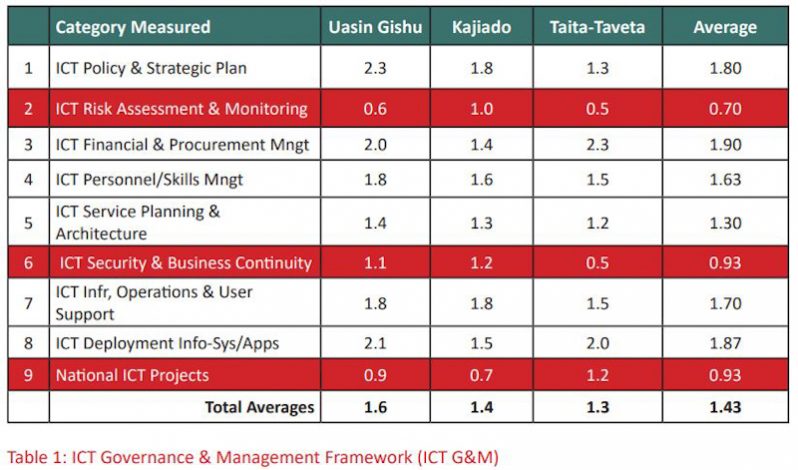The growing adoption of Information and Communications Technology (ICT) in Counties calls for developing ICT continuity frameworks, according to a joint report by Kenya ICT Action Network (KICTAnet) and the ICT Authority.
The report has highlighted ICT Categories that are performing well and which ones need improvement from consolidated findings from the counties ofUasin Gishu, Kajiado, and Taita-Taveta.
The survey and assessment sought to determine the extent to which the counties are adopting and leveraging ICTs to measure and track the maturity levels of key ICT processes that facilitate and enable efficient execution of the integrated County development plans.
This was based on the ICT Governance and Management Framework adapted from the Information Systems Audit and Control Association (ISACA) an international professional association focused on IT governance and Control Objectives for Information and Related Technology (COBIT) framework, which has been customized for the Kenyan Counties.
It says areas that need improvement would guide the counties in the next year as they try to implement and improve the ICT development agenda.
“Successful implementation of ICTs in county governments continues to face many challenges and requires legislative, budgetary, technical as well as political support – without which the ICT opportunities will remain unrealized,” says Dr. Katherine Getao CEO, ICT Authority and Grace Githaiga Convenor, KICTAnet.
The County ICT Survey 2019-2020 Assessment Report identified that most Counties were doing relatively well in ICT Strategy, ICT Financial, and Procurement Management, with an average score of 1.7 and 1.8, respectively.

However, the rest of the ICT categories recorded average scores below 1.5, implying that they are either incomplete or being performed in an ad-hoc manner.
As a result, they were urged to begin instituting an ICT Risk & Security Framework and working closely with the ICT Authority to activate National Optical Fiber Infrastructure (NOFBI) at County Levels.
“Some of the notable challenges behind the low performance included but were not limited to change of County Government leadership that leads to new priorities that may not align with the previous county leadership.
Additionally, most counties reported that the national projects, including the NOFBI, the Digital Learning Program (DLP), and the National Data Center, were happening without sharing information with County management.
This, therefore, presents an opportunity to review and improve the working relationships between the two levels of governments – as far as ICT development is concerned.”
In 2015, the ICT Authority developed the County ICT Roadmaps under the SMART County program, which recognizes that ICTs are tools that facilitate efficient delivery of services, and improve accountability and transparency while increasing public participation in the socio-economic development of the Counties.
RELATED
- Kenya Unveils Digital Economy Blueprint Anchored on Five Pillars
- The Fourth Industrial Revolution is Anchored on Connectivity





1 Comment
Pingback: CSO's Asks Kenyan MP to Withdraw Amendments to Cybercrimes Law